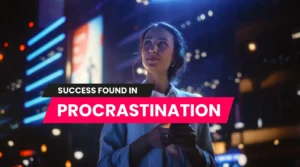Let’s get straight to the point, shall we? In the bare-knuckle world of sales and marketing, the word ‘Yes’ is the Holy Grail we’re all in hot pursuit of. It’s that sweet little syllable that signifies the crossing over from prospect to client, the gatekeeper of success. Well, pour yourself a stiff drink and slide into the smooth, leather-bound world of Robert Cialdini’s ‘Yes.’ This isn’t just another book on persuasion—it’s your playbook, your secret weapon, your peek behind the psychological curtain of what makes your customers tick. So fill up your coffee cup, adjust your tie, and let’s dive deep into the rabbit hole of Cialdini’s teachings, where ‘maybe’ becomes ‘possibly’ and ‘possibly’ becomes ‘absolutely.’
In the realm of persuasion, few individuals command as much respect as Robert Cialdini. His work, notably the book ‘Yes,’ provides fascinating insights into how we can influence people’s thought processes and steer them towards agreement. By delving into the human psyche and drawing upon extensive research, Cialdini offers potent strategies that can be wielded effectively in both personal and professional spheres. This blog will delve into the intriguing world of ‘Yes,’ examining the key principles that make this process work. Let’s unpack these strategies and learn how to apply them in our lives.
Brain Whispering
The Fine Art of Brain Whispering: Nudging the Neurological Nods to Your Favor
Understanding the mechanisms behind the gray matter between our ears can feel akin to decoding the Enigma—complex, intricate, and a tad overwhelming. But when cracked open, it’s a goldmine. The science of persuasion taps into our innate neurological responses, teasing out agreement from the most stubborn of prospects. Neuroscience tells us that we are naturally wired to seek out patterns, make connections, and gravitate towards that which is most familiar. Tap into these habits, and voila, you’re the puppet master, pulling on the strings of the subconscious mind. It’s not manipulative—it’s smart. And hey, who doesn’t want to be a brain whisperer?
Reciprocity
Reciprocity: The Delicate Dance of Give-and-Take
Reciprocity—the age-old principle of ‘you scratch my back, I’ll scratch yours’—is a dynamite stick in the world of persuasion. It’s a simple rule: when someone does something nice for us, we feel compelled to return the favor. In the world of sales and marketing, this could be as simple as a free sample, a helpful guide, or a meaningful gesture that showcases your brand’s generosity. Give them a taste of honey, and they’ll be back for the jar. Remember, the tango of reciprocity is a delicate dance of giving and receiving, and when done right, it can send your sales skyrocketing.
Consistency and Commitment
Consistency and Commitment: Using Identity as Your Invisible Sales Pitch
We humans, we’re funny creatures. We have a near-obsessive need to be consistent, especially with our own identities. Our actions need to match our words, our purchases need to reflect our personalities, and our decisions need to align with our values. In this realm, commitment isn’t just about making a promise—it’s about making that promise resonate with the person you’re looking to persuade. When you align your product or service with your customers’ identity, you’re not selling anymore—you’re helping them become the person they see themselves as. Now that’s a persuasive pitch.
Social Proof
Social Proof: Riding the Wave of the Majority
No one wants to be left out in the cold. We’re social creatures, herd animals—and when we see others doing something, our instinct is to follow suit. This is where social proof becomes your secret weapon. It’s about cultivating a sense of belonging, of not being left behind. Testimonials, reviews, endorsements—these aren’t just fancy add-ons; they’re the signals that tell your customers, “Hey, you’re not alone in this. Others are here, and they’re having a whale of a time.” Trust us, the sweet nectar of validation can coax even the most hesitant prospect into a resounding ‘yes.’
Liking and Authority
Liking and Authority: Trust Me, I’m in Advertising
Finally, let’s address the elephant in the room—trust. It’s the glue that holds the fragile structure of persuasion together. If your prospects trust you, they’re more likely to like you, and if they like you, they’re more likely to do business with you. It’s as simple, and as complex, as that. But trust isn’t gifted—it’s earned. And one of the quickest routes to trust is through authority. Show that you know your stuff, demonstrate expertise, radiate confidence. And while you’re at it, don’t forget to flash a charming smile or two. Trust us—we’re in advertising.
So there you have it, folks—the magical playbook of persuasion, courtesy of the master himself, Robert Cialdini. From whispering to neurons to the hypnotic dance of reciprocity, from the stubborn need for consistency to the irresistible pull of the crowd, and finally, the trump card of trust, wielding these powers can transform your business and rocket your sales figures to stratospheric heights. It’s a wild, fascinating world out there in the land of ‘yes.’ So straighten that tie, polish those shoes, and stride out into the battlefield of persuasion, armed with these principles. Remember, in this game, the power to influence is the power to succeed. Stay classy, and most importantly, stay persuasive. Trust me, I’m in advertising.
Yours Sincerely,
Don Draper.
Let’s Chat!
We’ve spent years developing the material we’re sharing with you, schedule a time with a strategy consultant for a more customised approach to your business.




